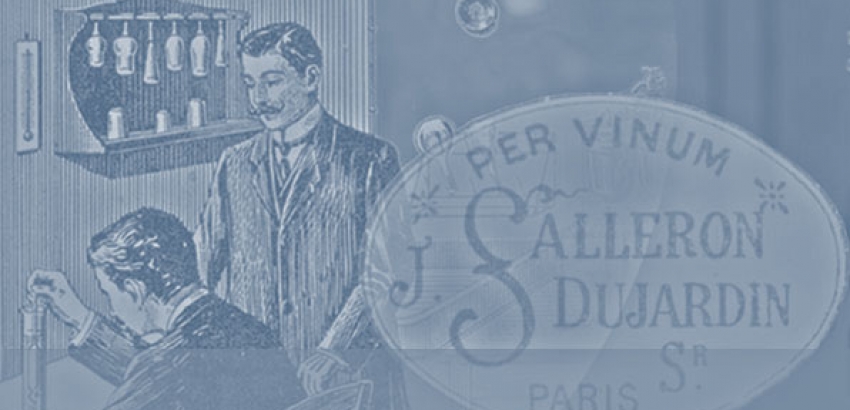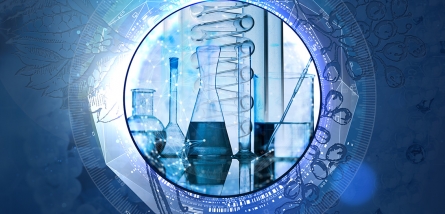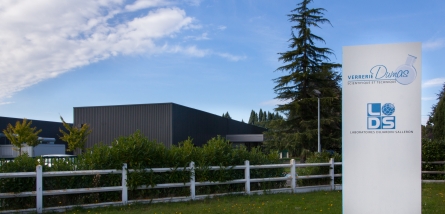
-
Un peu d'histoire...30 / 03 / 2022
Les précurseurs des analyses œnologiques furent Baumé, Gay-Lussac, et plus tard Pasteur, qui, aux XVIIIème et XIXème siècles, posent les bases théoriques de la fermentation.
Dans leur illustre sillage, Jules Salleron (1829-1897) se spécialise dans l’instrumentation de précision et invente l’alambic, l’acétimètre et surtout l’ébulliomètre. Rejoint par Jules Dujardin (1857-1947), le tandem continue d’innover pour devenir des pionniers dans le développement d'instruments d'analyse des moûts et des vins. En effet, en tant qu’élève de Pasteur, Jules Salleron s’intéresse particulièrement à la fermentation et à la détermination de l’alcool. Les premiers alambics de laboratoire ont été conçus à cette époque, au milieu du XIXe siècle. Ils étaient déjà utilisés par les bureaux des impôts. L'ébulliomètre a été conçu vers 1870 par Jules Salleron, qui l'a également fabriqué et distribué. Son jeune collaborateur, Jules Dujardin a amélioré cet ébulliomètre pour lui donner la forme que nous connaissons aujourd’hui.
Avec un matériel simple et une mise en œuvre rapide, l’ébulliométrie permet, principalement lors des opérations d'assemblage, de déterminer le titre alcoométrique volumique (TAV) acquis des vins secs et de donner un résultat immédiat.
Principe de mesure
Le point d’ébullition est une des caractéristiques d’un liquide : à la pression de 1 atmosphère, l’eau bout à 100°C et l’éthanol à 78,4°C. Le vin étant un mélange composé principalement d’eau et d’alcool, son point d’ébullition dépend de son degré alcoolique.
Plus la température d’ébullition d’un vin est bas, plus son degré d’alcool est haut.
La pression atmosphérique et l’altitude influencent le point d’ébullition. Une calibration est donc nécessaire pour déterminer les conditions de l’environnement au moment de la mesure. Ainsi, la première étape consiste à mesurer le point d’ébullition de l’eau ou d’un vin étalon pour ajuster la table de correspondance "point d’ébullition/degré alcoolique". Le point d’ébullition de l’échantillon peut alors être mesuré et reporté sur la table de correspondance pour connaître le degré alcoolique.
Les sucres en solution ont une influence sur le point d’ébullition. En deça de 2 g/l, cette influence n’est pas assez importante pour réduire la précision. Au delà de ce seuil, une correction doit être appliquée ou une autre méthode utilisée.
Recommandations
La mesure du point d’ébullition nécessite l’utilisation d’un ébulliomètre, traditionnel ou électrique. Dans tous les cas, une mesure (hors calibration) dure environ 7-8 minutes. La méthode est valide pour les vins secs en dessous de 20% Vol., avec une précision d’environ ±0,1% Vol.
Afin d’obtenir des résultats précis, il est nécessaire de prendre des précautions d’utilisations :
• utiliser le même thermomètre ou la même sonde pour faire la calibration et la mesure ;
• respecter scrupuleusement les volumes de solution étalon et d’échantillon prévus ;
• travailler avec des liquides et un ébulliomètre à température ambiante ;
• ne pas verser l'échantillon dans une chaudière chaude ;
• veiller à ce que la réfrigération soit efficace pour éviter des pertes de vapeur d’alcool pendant la chauffe ;
• s’assurer de l’absence de sucres dans l’échantillon ;
• renouveler la calibration régulièrement si l’ébulliomètre n’est pas pourvu d’un capteur de pression atmosphérique.
Grâce à sa simplicité d'utilisation, plus d’un siècle après sa mise au point, l’ébulliomètre reste un instrument largement utilisé dans le monde par les viticulteurs. Disponible sous sa forme traditionnelle avec chauffe par lampe à alcool ou sous des formes plus contemporaines avec chauffe électrique et acquisition électronique de température, son utilisation s’étend aujourd’hui à d’autres activités du secteur agro-alimentaire (brasseries, cidreries, rhumeries, vinaigreries, etc.) et industriel (production de bioéthanol).




